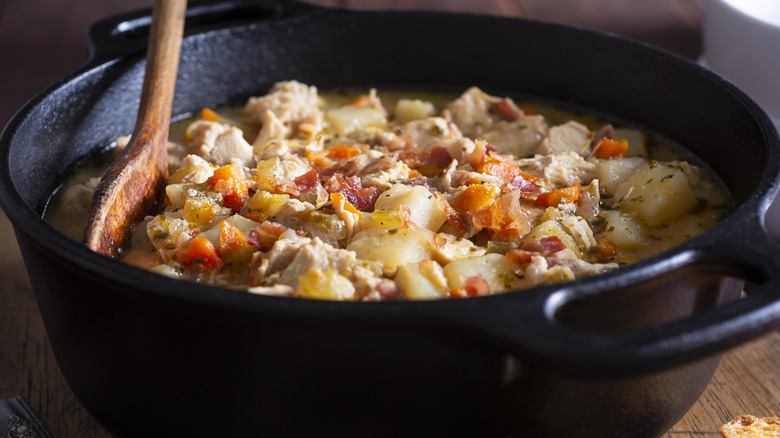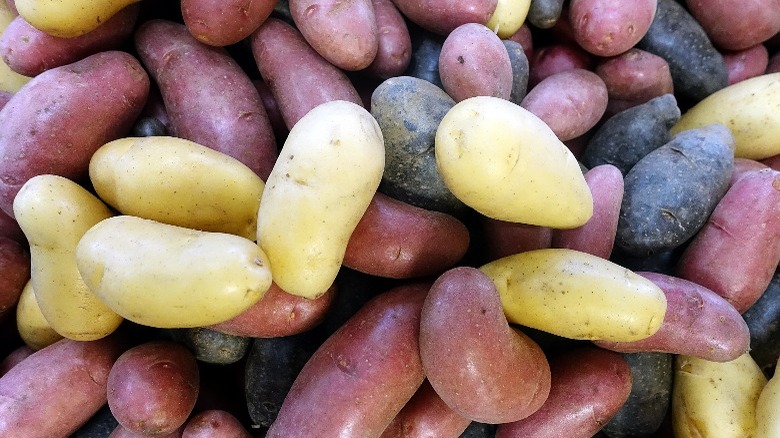For Near Effortless Soups, Switch To Fingerling Potatoes
Soup brings with it a true bounty of goodness. Something about its belly-warming simplicity is soothing to the soul. But there's also no denying the amount of effort that goes into making homemade soup, where most of the labor comes in the cutting and prepping of those nutritious veggies. This is especially true for heartier soups, where root vegetables play an integral role in everything from beef stew and clam chowder to minestrone and, of course, potato soup.
Pillowy soft chunks of potato lend a cozy hominess to many soups, but for all their heartiness, they also bring a tedious amount of peeling and chopping. Enter fingerling potatoes. The uniquely stunted nature of these small taters makes for a perfect soup-making hack. The name fingerling comes from their finger-like shape. Their thin skin, waxy texture, and low starch content make them ideal for chunky soups and stews. Even better, in their skin-on state, fingerlings retain their shape rather than falling apart, ensuring piping-hot, cohesive spuds every time. And because they run so small in size, you'll need only to wash and cut them in half (at most) before popping them in for a nearly effortless soup prep.
How to use fingerling potatoes in soups and stews
While fingerlings are often a first choice when it comes to making crispy oven-roasted potatoes, their buttery taste can bring a rich boost of flavor to any soup. Some of the most popular types include the Russian Banana (long with yellow skin), the reddish-skinned French fingerling (yellow inside), and the Purple Peruvian (purple inside and out). Part of what makes fingerlings ideal for soup is their thin skins, which means you don't need to peel them. The only thing you'll need to do before adding them to your favorite soup is give them a good scrub under cold water. Found separately or in a mix, fingerlings should not be confused with "new" potatoes, which are just small regular potatoes that have been harvested prematurely.
Most importantly, when choosing these tubular tubers, you should look for the same characteristics you would in regular potatoes — firm to the touch with little to no give, devoid of spots and sprouting, and with a smooth texture. Give these labor-saving spud subs a try in place of larger, more typical choices like russets, reds, or Yukon golds. You just might find their ease of use, great flavor, and less demanding prep time will make things a bit less daunting and allow you to whip up your favorite soup recipes more often.

